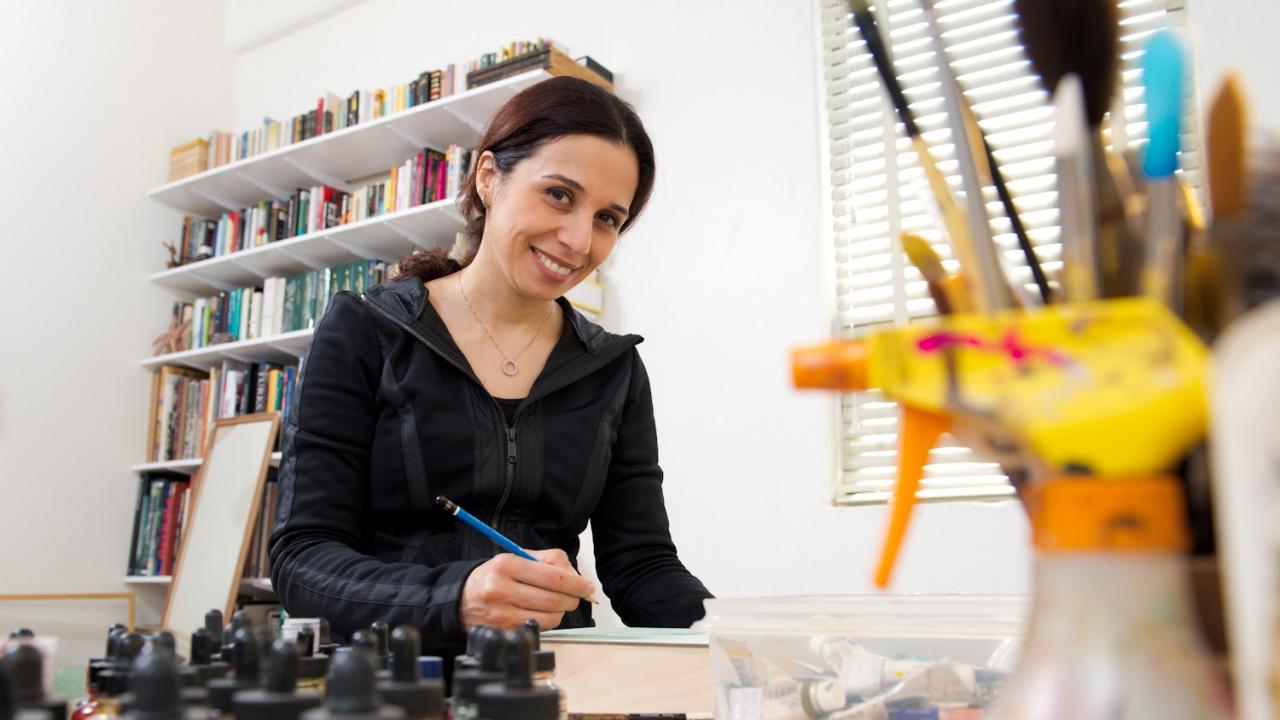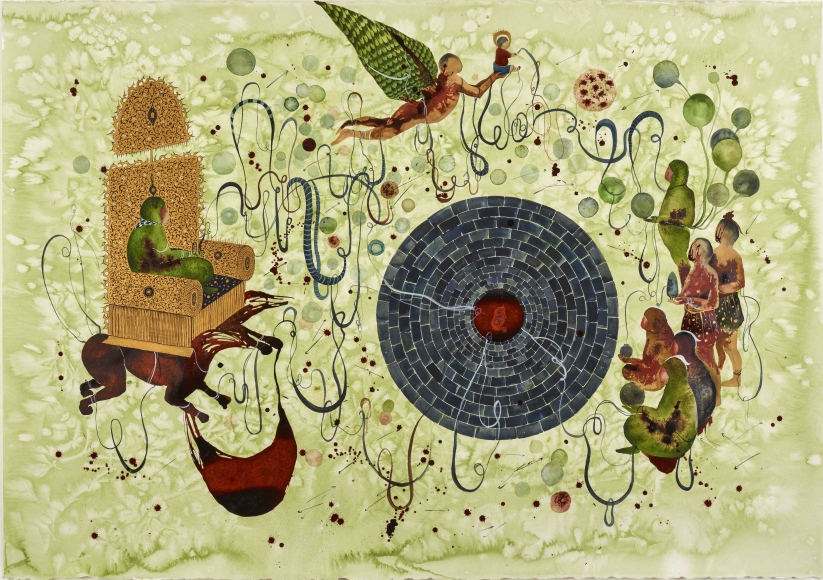
Shiva Ahmadi’s Art Blends the Beautiful and Beastly
Shiva Ahmadi left Iran in 1998, but the country and the culture are still present in her artwork. Her paintings are inspired by delicate, jewel-like Persian miniatures depicting religious, mythological or royal court scenes, but Ahmadi’s are filled with things that are not so beautiful.
“I want to make beautiful things that get the viewers’ attention, but when they get closer they see the message is ugly,” said Ahmadi, an assistant professor of art.
The meticulously rendered people and animals, buildings and decorative elements in her art contrast with blood, bombs, oil pipelines running through religious shrines and tyrannical rulers surrounded by underlings depicted as monkeys, willing to serve whomever is in power for a little power of their own.

As part of an exhibition of Iranian artists earlier this year in New York, an animation of her painting “Lotus” was singled out by the Wall Street Journal: “It grabs viewers and immerses them in a terrifying parable of enlightened government turned bad. With remarkable subtlety and stunning beauty, a peaceful world presided over by a Buddha-like leader is transformed by merchants of death into a wasteland of violence and wanton destruction.”
Such imagery comes directly from her youth in Iran. The family home had handcrafted, colorful rugs on the floor and modern Persian miniature paintings on the walls, but on television and outside was war. First came the 1979 Iranian revolution. The following year the war with Iraq started and would last eight years.
After college in Iran, Ahmadi joined her older sister, an engineer, in Detroit for graduate school, happy to leave behind headscarves, daily prayers and being forbidden to talk to boys—and those cut-rate Persian miniature paintings. She was making art grounded in feminist theory and the figure, working from the nude, which she couldn’t do in Iran.
Then came the 9/11 attacks and the U.S. invasion of Iraq in 2003. “A lot of anxiety came back,” Ahmadi said, “and maybe homesickness, too.”
She wanted to find a way to explore her own background in new ways and discover something she had not learned about the artistic heritage of her own country. She began visiting the Islamic Art collection at the Detroit Institute of Arts.
Her first works inspired by the miniatures were not small—they were on 50-gallon oil drums, a reference to what many saw as battles over oil. She later returned to a more traditional approach of watercolors and ink on paper and aquaboard. And while she does small paintings, she also works big, creating pieces up to 5 feet by 10 feet.
For a decade Ahmadi has been represented by the Leila Heller Gallery in New York and Dubai, and her work is in the collections of the Metropolitan Museum of Art, Detroit Art Institute and the Museum of Contemporary Art, Los Angeles.
While her art is grounded in the cultural, historical, social and political life of her native country, it is also informed by the bankruptcy of Detroit, the shutdown of the U.S. government during 2013 and the current presidential race.
“I believe what I’m doing is universal,” she said, “that there is a way for people from anywhere, any background to relate to and understand my art.”
— Jeffrey Day, content strategist in the UC Davis College of Letters and Science
